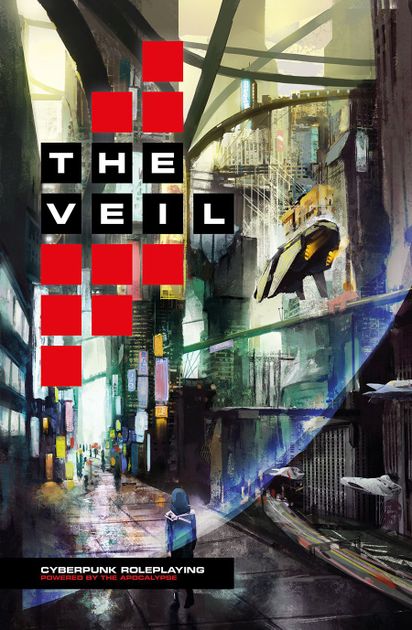I started to feel that I didn’t know roleplaying games well enough so I came up with the plan to read a roleplaying game corebook for every year they have been published. Selection criteria is whatever I find interesting.

A published roleplaying game is a book that explains how to run or play a specific type of roleplaying game session or campaign. It instructs but often also inspires. One avenue for inspiration is to build an imaginative dream in the mind of the reader about the world of the game and what happens there.
Many games seek to construct a detailed, pre-designed in-game world that the reader and eventually players can inhabit. Vampire: the Masquerade is an example of this: It goes all in with descriptions of the Toreador and the Sabbat.
The Veil is at the other end of the spectrum. It’s a cyberpunk game where the creation of the world is part of the play experience so the book is written from a technical game design perspective, choosing to avoid prejudicing the players’ world construction beyond genre tropes and a few specific necessary setting elements.
The game is based on Apocalypse World. Indeed, it feels like an important entry in the canon of Powered by the Apocalypse games, a game where system design takes center stage and everything else fades into the background. The reading experience is supported by a glossary so that you won’t be completely lost with the specific technical meanings of words like fiction or flavor.
Privileging the mechanics extends to the copious examples of play scattered through the book. In them, a player might get complimented on inventing a fun piece of flavor, in-game detail that makes the movements of the mechanics more fiction-y.
As is typical in Apocalypse games, the playbooks take center stage. They’re expanded character classes or archetypes, such as the inhuman Apparatus or the supremely skilled Honed. Each playbook comes with moves, meta-level actions that the player can use to influence the fiction of the game through their player character. In The Veil, the playbooks and their moves are minutely designed, obviously with great care and attention to detail.
In the field of Apocalypse games, The Veil’s most unusual quality is the system of emotional states that govern how characters get bonuses to their dice rolls. For example, if the emotional state is peaceful at +2, I could get a +2 bonus in a situation where peaceful is relevant. This means there’s a lot of attention paid to the characters’ emotional states but they’re also mechanized in the service of game mechanical success.
Instead of building its own setting (since that’s constructed by the players before and during the game), The Veil draws a lot of inspiration from cyberpunk classics. Works such as Ghost in the Shell and Neuromancer get extended treatments, explaining how their themes break down in ways relevant to running your own game.
The Veil is a designer’s game, written in such a way that the design level is always the most visible.